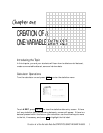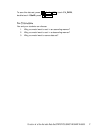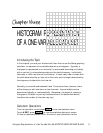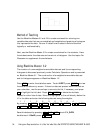
3. the standard deviation assuming the data set represents the
entire population, σx;
4. the sum of the data values, ∑x;
5. the sum of the squared data values, ∑x
2
;
6. the number of values in the data set, n;
Press ▼ four times to see the rest of the statistics.
7. the minimum value in the data set, xmin;
8. the first quartile (25th percentile), Q1;
9. the median (50th percentile), Med;
10. the third quartile (75th percentile), Q3;
11. the maximum value in the data set, xmax.
Your students may have trouble with conceptualizing the meaning of standard
deviation. Tell them it is a measure of variability (dispersion) that is related to
the average deviation or average distance from a data value to the mean.
Method of Teaching
Use the Blackline Master 2.1 and 2.2 to create an overhead for calculating
the numerical descriptions of a one-variable data set. Go over in detail the
statistics provided by the calculator. Next, use the Blackline Masters 2.3
and 2.4 to create worksheets for the students. Have the students enter and
save the non-weighted and weighted data sets, and then compute the numerical
descriptions. Use the topics For Discussion to supplement the worksheets.
8 Numerical Description of a One-Variable Data Set/STATISTICS USING THE SHARP EL-9600


















